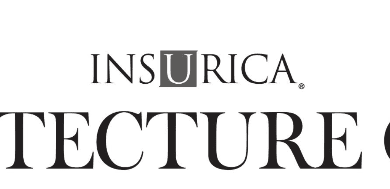Baltimore bridge collapse could add to challenges in reinsurance availability: AM Best – Artemis.bm
The reinsurance market is expected to bear the brunt of losses from the collapse of the Francis Scott Key Bridge in the US city of Baltimore after container ship Dali struck one of its support columns, which rating agency AM Best said will add to the increasing challenges of reinsurance availability.
Image source: BBC
The container ship Dali, which is flagged in Singapore and was carrying cargo from Maersk, ran into the support column of the Francis Scott Key Bridge in the early hours of Tuesday morning, causing it to collapse.
The bridge is a critical piece of infrastructure for the region, spanning the entrance to the Port of Baltimore, which is reported to be the busiest port in the US for car exports and the ninth-busiest overall.
The bridge is also seen as a vital route for transportation of hazardous materials around the United States, given the only other routes in the area are in tunnels, in which hazardous materials cannot be transported.
There were no reports of injuries on the ship itself, but six people were missing and now presumed dead after the disaster.
Marine protection and indemnity insurer the Brittania P&I Club has confirmed that it provided part of the coverage for the container ship.
But, with the market anticipating what could be the largest marine insurance loss since the Costa Concordia, the ramifications are expected to flow to reinsurance capital focused on the specialty lines and potentially also retrocession.
Matilde Jakobsen, senior director, analytics at AM Best explained, “Reinsurers will bear the bulk of the insured cost of the collapse of the Francis Scott Key Bridge in Baltimore. Liability cover for most shipping vessels is provided through protection and indemnity insurers known as P&I Clubs. The P&I segment is dominated by the members of the International Group of P&I Clubs (International Group), which collectively insure approximately 90% of the world’s ocean-going tonnage. As part of the International Group’s pooling arrangements, member clubs mutually reinsure each other by sharing claims above USD 10 million. Additionally, the group buys general excess of loss (GXL) reinsurance cover up to USD 3.1 billion in the open market.
“While the total cost of the bridge collapse and associated claims will not be clear for some time, it is likely to run into the billions of dollars – well above the USD 100 million attachment point for the GXL contract.”
As Jakobsen points out, this is going to be a marine market industry loss that takes some time to dissect and claims could take a while to come to light, as the ramifications of the accident and the effect on transportation come to light.
The cost of damage to the ship is one component, but the destruction and rebuilding of the Key bridge is likely to be more costly.
It’s been reported that Aon brokered the bridge policy, for its construction, value and replacement, but any claims against this are expected to result in subrogation to the ship owner and marine policy, it appears.
News reports suggest the value of the bridge to be in the region of $1.2 billion, although it’s not clear what coverage limits are in place.
As Jakobsen said, the International Group of P&I Clubs reinsurance program is expected to be tapped to pay claims (AXA XL is noted as a leader on this tower), which will see losses spread widely through the relatively large panel that backs that arrangement.
But, there are expected to be avenues for claims through other insurance channels, potentially with liability claims for damage and deaths, coverage tapped for clean-up and reconstruction, but also and perhaps notably for contingent business interruption costs, which could be an extensive component of the loss.
While AM Best forecasts billions of dollars in claims and insured losses, it is the business interruption impacts that could see that ultimate cost spiralling higher.
The economic impact of the bridge destruction will be significant and prolonged, given rebuilding a piece of infrastructure like that will take years.
Jakobsen of AM Best further stated, “The insurance issues due to the collapse of the bridge will take a long time to unravel and may involve several lines such as property, cargo, liability, trade credit and contingent business interruption.
“The claim will likely involve several insurers, reinsurers, subrogation, and legal issues and will serve to add to the increasing challenges in reinsurance availability.”
It’s certainly an event that could affect reinsurer appetites and if the business interruption impact is significant and can be claimed for, it could drive a larger loss to the reinsurance capital supporting those insurers exposed. How significant that could be will also be determined by the terms in-force across the web of policies involved, making it a complex incident to derive any kind of loss quantum for.
With the bulk of the costs expected to fall to the reinsurance industry, it means there is a chance of some flowing to retrocession arrangements.
In addition, quota share arrangements may ultimately take a share and that could include some of the collateralized reinsurance sidecars of major reinsurers that include coverage for some specialty lines business, Hannover Re’s K-Cession is one example of a third-party investor backed structure that has included marine exposure in the past.
There are some other specialty lines focused insurance-linked securities (ILS) strategies that could take some exposure, however this would be anticipated to be minor given the bulk of this loss appears set to fall to reinsurers that will likely retain a significant proportion.
Ultimately, any ILS market impact from this loss would be anticipated to be on the retro and sidecar side of things. But, even then, the number of points where exposure could leak to and certain ILS structures find themselves exposed is likely relatively limited and this is likely to prove attritional in the main to them, rather than especially impactful.



